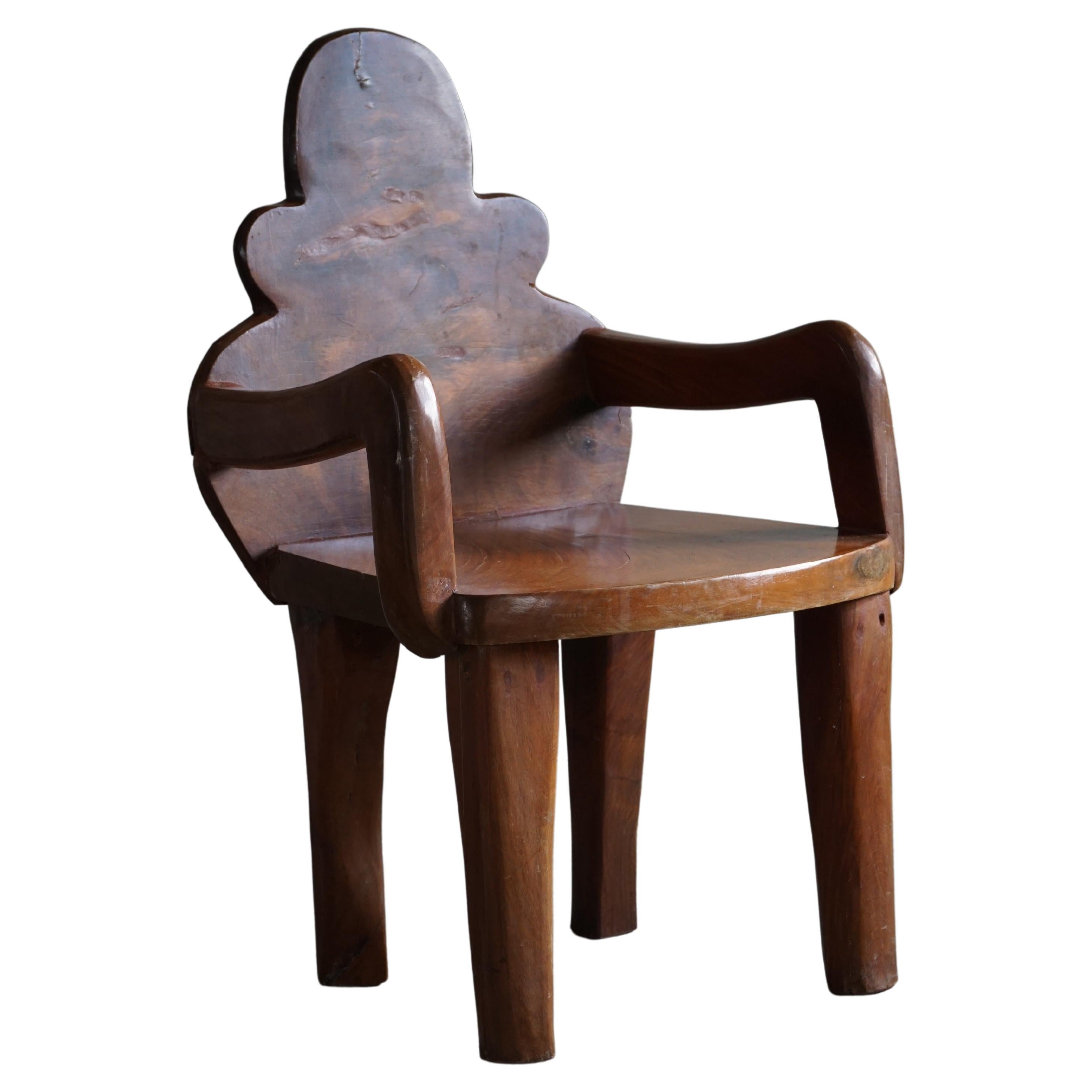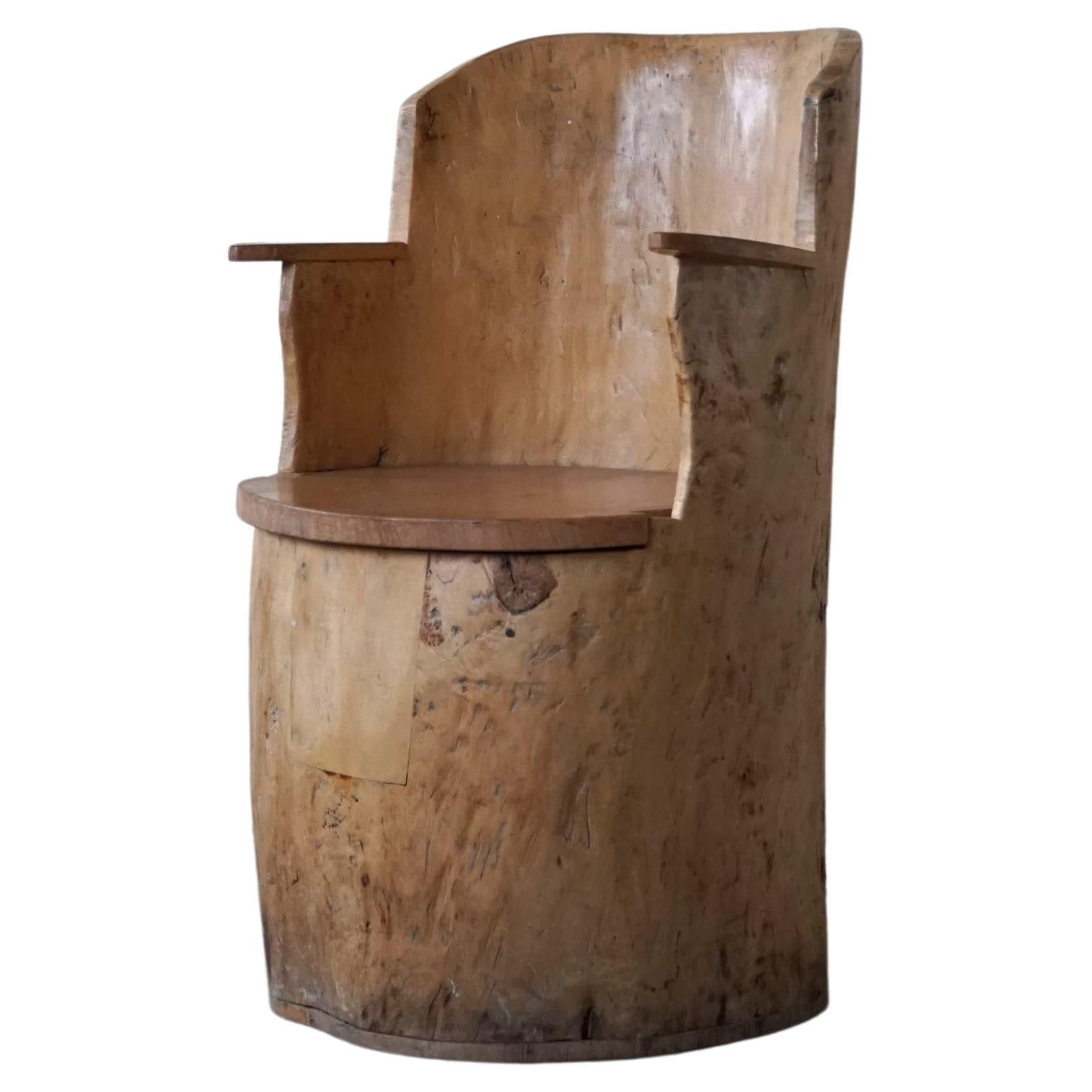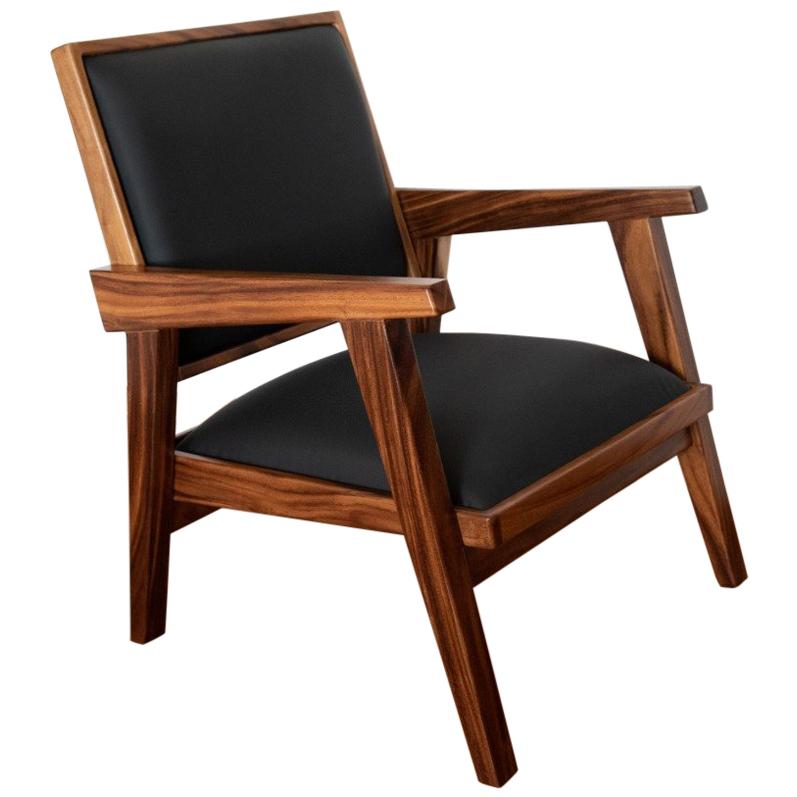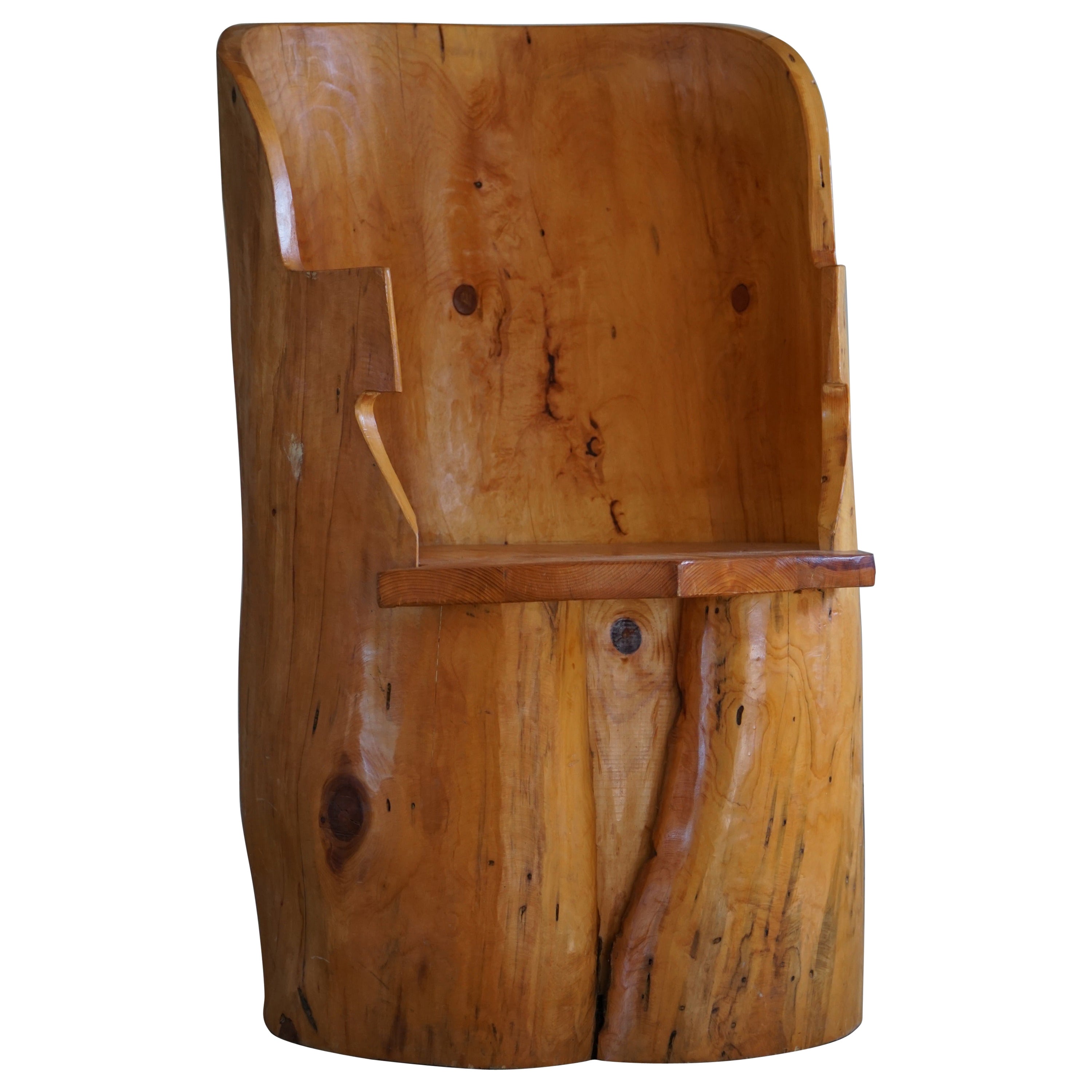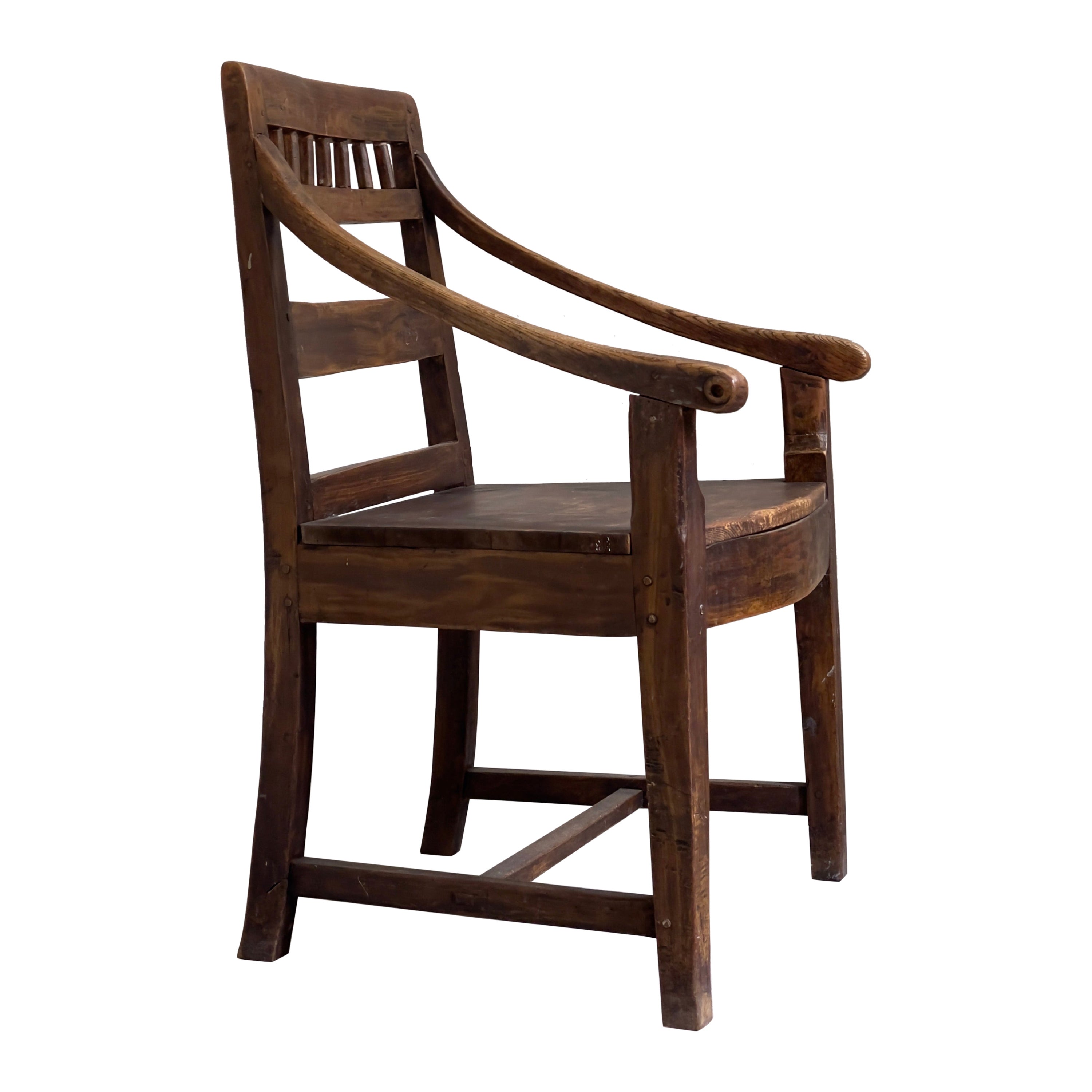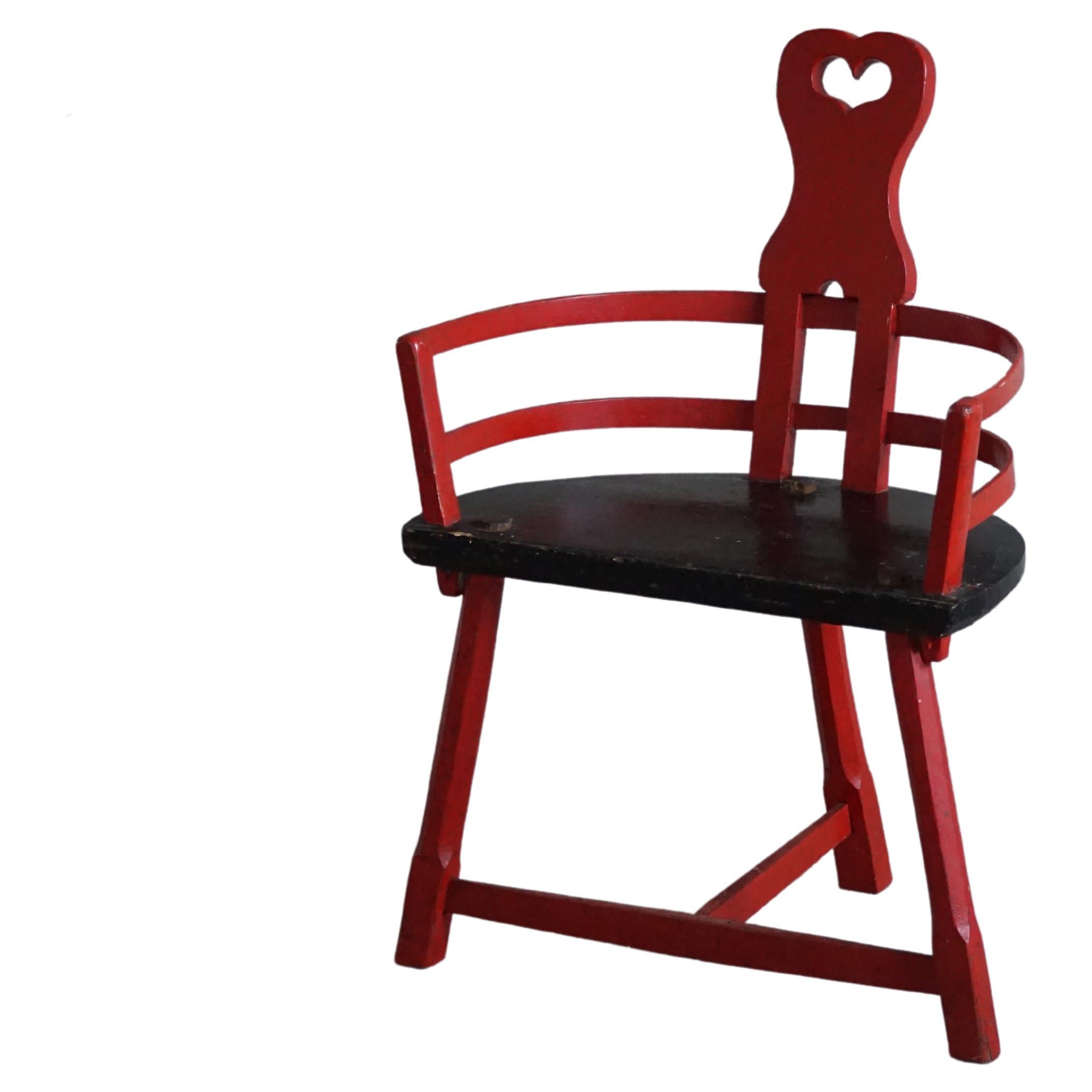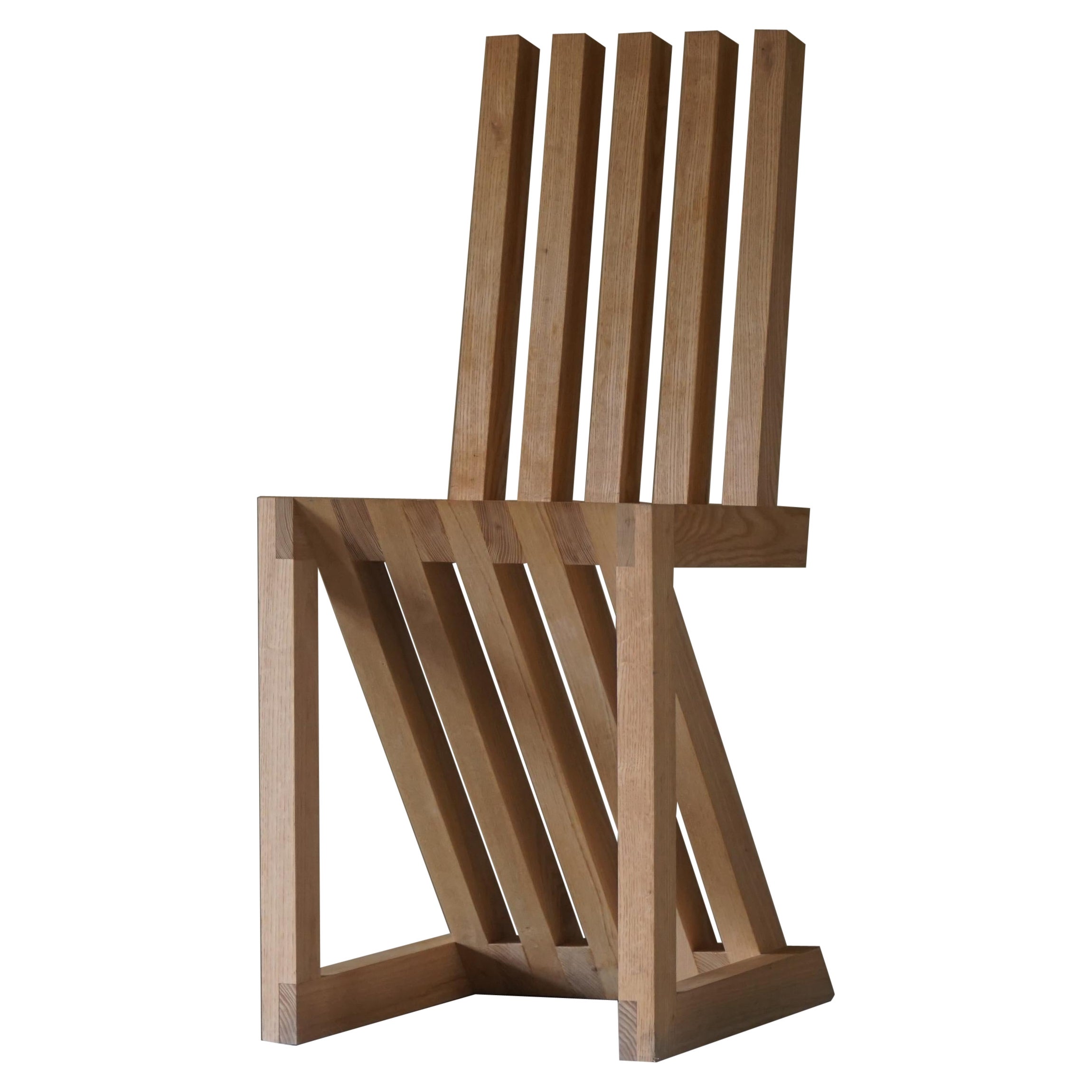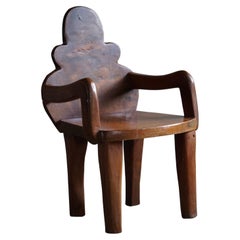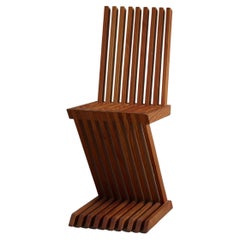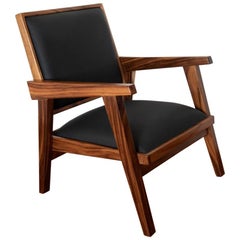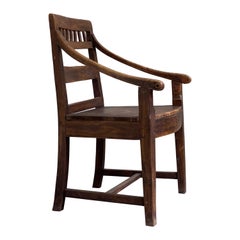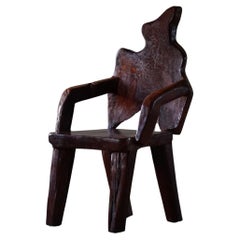
Organic Handcrafted Wabi Sabi Chair in Solid Wood, Scandinavian Modern, 1900s
View Similar Items
Want more images or videos?
Request additional images or videos from the seller
1 of 14
Organic Handcrafted Wabi Sabi Chair in Solid Wood, Scandinavian Modern, 1900s
About the Item
- Dimensions:Height: 24.81 in (63 cm)Width: 18.9 in (48 cm)Depth: 11.82 in (30 cm)Seat Height: 15.75 in (40 cm)
- Style:Brutalist (In the Style Of)
- Materials and Techniques:
- Place of Origin:
- Period:
- Date of Manufacture:1930-1940
- Condition:Wear consistent with age and use.
- Seller Location:Odense, DK
- Reference Number:1stDibs: LU5686232558912
About the Seller
5.0
Platinum Seller
These expertly vetted sellers are 1stDibs' most experienced sellers and are rated highest by our customers.
Established in 2019
1stDibs seller since 2021
667 sales on 1stDibs
Typical response time: 1 hour
More From This SellerView All
- Organic Handcrafted Wabi Sabi Armchair in Solid Wood, Swedish Modern, 1900sLocated in Odense, DKA fantastic unique wabi sabi chair carved from a large wooden piece. Traces of wear. Handcrafted by a Swedish Cabinetmaker in the mid 20th century. ...Category
Mid-20th Century Swedish Brutalist Armchairs
MaterialsHardwood
- Handcrafted Sculptural Zig Zag Chair Made in Solid Pine, Scandinavian ModernLocated in Odense, DKA fine brutalist zig zag chair made in solid pine. Hand crafted by an unknown Scandinavian cabinetmaker in the 1980s. A decorative chair that plays well with the natural daylight, su...Category
Late 20th Century Scandinavian Art Deco Office Chairs and Desk Chairs
MaterialsPine
- Wabi Sabi Stump Chair in Solid Birch, by a Swedish Cabinetmaker, Modern, 1950sLocated in Odense, DKCharming primitive stump chair made in solid birch. Hand carved by an unknown Swedish cabinetmaker. A nice wabi sabi piece, perfectly sutied for the modern interior. This modern arm...Category
Mid-20th Century Swedish Brutalist Armchairs
MaterialsBirch
- Stump Chair in Solid Birch by a Swedish Cabinetmaker, Wabi Sabi, 1950sLocated in Odense, DKCharming primitive stump chair made in solid birch. Hand carved by a Swedish cabinetmaker. A nice wabi sabi piece, perfectly sutied for the modern interior. This modern armchair w...Category
Mid-20th Century Swedish Brutalist Armchairs
MaterialsBirch
- Antique Decorative Painted Heart Armchair, Wabi Sabi Style, Early 1900sLocated in Odense, DKSuch an elegant and decorative antique heart chair with interesting shapes. A rare decorative object made in wood and painted red with a heart in t...Category
Early 20th Century Swedish Art Deco Chairs
MaterialsWood
- Primitive Handcrafted Organic Highback Naga Chair in Solid Teak, Wabi Sabi StyleLocated in Odense, DKOne of a kind charming authentic primitive stump chair made in a single solid hardwood. Hand carved by the Naga tribe in India, ca 1970s. A nice wabi...Category
Mid-20th Century Indian Folk Art Chairs
MaterialsHardwood, Teak
You May Also Like
- Mexican Conacaste Modern Rustic Solid Wood Chair with Fine Leather SeatsBy Estrella Mora ZamoranoLocated in Queretaro, QueretaroIn the Michoaca´n hillside lays Cuanajo, a town inhabited entirely by Purhe´pechas, the largest group of indigenous people in the state of Michoaca´n. Alejandro Valencia Huacuja, craftsman and manufacturer, leads the Mora-Huacuja local workshop in Cuanajo, a town whose main economic activity is the work with wood and its varieties. He has been working with wood since he was a child growing up between dust and sticks. Being able to learn from his family a tradition and way of life that has been passed on from generation to the next. “Touching the nature of wood, appreciating its texture and smell, is the beginning of a story that will continue to exist in those who enjoy it,” says Alejandro. Estrella on the other hand, with a degree in architecture and her great passion for design had always wanted to involve her work with the people from her home state, Michoaca´n. After meeting Alejandro they both decided to start their own furniture line, focusing on Conacaste wood, a very elegant and resistant wood from the region. “It’s not just about crafting beautiful designs, but about preserving the knowledge of our ancestors while creating something that speaks to today’s lifestyle while standing the test of time,” says Estrella. Mexican architect Estrella Zamorano's collection "was born with the intention of returning the identity of Mexico's history to design, creating links between artisans and designers, so that working together we can weave a future respectful of ancestral techniques, as well as being an engine for the economic development of the communities that continue to work in an artisanal way," as she mentions in the interview. This beautiful armchair is crafted using high end solid conacaste wood (Enterolobium cyclocarpum) also known as Parota wood. By partnering with local communities in Michoacan, Mexico, Estrella collaborates with artisans from Ihuatzio and Cuanajo to create a durable, contemporary, and resistant beach house chair...Category
21st Century and Contemporary Mexican Modern Armchairs
MaterialsLeather, Wood
- Wabi Sabi chairLocated in København K, 84Elegant anonymous wabi sabi armchair in stained oak. Very good and solid condition. Strong characteristic armrest and a beautiful patina. Featured i...Category
Early 20th Century Danish Arts and Crafts Armchairs
MaterialsOak
$2,074 - 1930´s Art Deco Desk Chair in Solid Oak, leather - BelgiumLocated in Girona, ESArt Deco desk armchair, solid oak wood and oak veneer, french polish, restored seat with leather uphostery. Belgium c. 1930Category
Vintage 1930s Belgian Art Deco Office Chairs and Desk Chairs
MaterialsLeather, Oak
- Scandinavian Set of Three Mid century ChairsLocated in Los Angeles, CAScandinavian orange set of 3 chairs ,very comfortable the back rest is adjustable and it can be adjust like the show on the photos .Category
Vintage 1970s Scandinavian Mid-Century Modern Armchairs
MaterialsChrome
$2,240 Sale Price / set20% Off - Pair of Solid Lucite Vanity Chair, 1940sLocated in Ciudad Autónoma Buenos Aires, CPair of solid lucite chairs We have specialized in the sale of Art Deco and Art Nouveau and Vintage styles since 1982. If you have any questions we are at your disposal. Pushing the button that reads 'View All From Seller'. And you can see more objects to the style for sale. Why are there so many antiques in Argentina? In the 1880 – 1940 there was a grate wave of immigration encouraged by the periods of war that were taking place. 1st World War took place between 1914 and 1918 2nd World War took place between 1939 and 1945 The immigrants options were New York or Buenos Aires. Tickets were cheap and in Buenos Aires they were welcomed with open arms, as it was a country where everything was still to be done. Argentina was the country of new opportunities, labour was needed and religious freedom was assured, in many cases the of the family travel first until they were settled and then the rest of the family members join them. In the immigrant museum “Ellis Island Immigrant Building” in New York you can se the promotional posters of the boats that would take them to a new life. Between the years 1895 and 1896, Argentina had the highest DGP (gross domestic product) per capita in the world according to the Maddison Historical Statistics index, this situation arose due to the large amount of food being exported to European countries, which were at war. The Argentinean ships left the port of Buenos Aires with food, but they returned with furniture, clothes and construction elements, (it´s common to see this the old buildings of the historic neighbourhood of San Telmo, the beams with the inscription “Made in England)”, as well as many markets that were built in Buenos Aires, such us the San Telmo Market, whose structure was brought by ship and afterwards assembled in 900 Defensa Street. With the great influence of European immigrants living in the country, the children of the upper classes travelled to study in France, resulting in the inauguration of “La Maison Argentinienne”, on 27th of June 1928, in the international city of Paris, which hosted many Argentinians that were studying in Frace. It´s the fourth house to be built after France, Canada and Belgium, being the first Spanish-speaking one. Still in place today (17 Bd Jourdan, 75014, Paris, France). Many of the children of these wealthy families who attended international art exhibitions, museums and art courses abroad, took a keen interest in the European style. This is why Buenos Aires was at the time referred as “The Paris of South America”. Between the years 1890 and 1920 more than a hundred Palaces were built on Alvear Avenue the most exclusive avenue in Buenos Aires. Today some of these palaces have been transformed into museums, hotels and embassies. In the year 1936, the Kavanagh building was inaugurated, it was the tallest reinforced concrete building in South America. During 1994 the American Society of Civil Engineers distinguished it as an “international engineering milestone”, and it´s now considered a World Heritage of Modern Architecture. At the time was common to hire foreign architects such as Le Corbusier, who visited Buenos Aires/Argentina in 1929 and in 1948 he drew up the blueprints for a house built in La Plata City (which was declared a World Heritage Site). In 1947, the Hungarian architect Marcelo Breuer designed “Parador Ariston” in the seaside city of Mar del Plata. After an Argentinean student at Harvard University convinced him to come to Argentina. He worked on an urban development project in the Casa Amarilla, area of La Boca. The Ukrainian architect, Vladimiro Acosta, arrives in Argentina in 1928 and worked as an architect until que moved to Brazil. Antonio Bonet, a Spanish architect who worked with Le Corbusier in Paris, arrives in Argentina in 1937, where he carried out several architectural works and in 1938 designs the well-known BFK chair...Category
Vintage 1940s American Space Age Office Chairs and Desk Chairs
MaterialsLucite
$12,000 / set - Handmade Mexican Contemporary Conacaste Solid Wood Living-room ArmchairBy Estrella Mora ZamoranoLocated in Queretaro, QueretaroMexican architect Estrella Mora's collection "was born with the intention of returning the identity of Mexico's history to design, creating links between artisans and designers, so that working together we can weave a future respectful of ancestral techniques, as well as being an engine for the economic development of the communities that continue to work in an artisanal way," as she mentions in the interview. This beautiful armchair is crafted using high end solid conacaste wood (Enterolobium cyclocarpum) also known as Parota wood. By partnering with local communities in Michoacan, Mexico, Estrella collaborates with artisans from Ihuatzio and Cuanajo to create a durable, contemporary, and resistant beach house chair...Category
21st Century and Contemporary Mexican Modern Armchairs
MaterialsNatural Fiber, Wood, Bentwood
Recently Viewed
View AllMore Ways To Browse
Antique Modern Decor
20th Century Hardwood Office Chairs and Desk Chairs
Antique With Modern Decor
Modern Decor With Antique Furniture
Modern Organic Style Armchair
Modern Organic Chair In Solid Wood
Swedish 1900s
Vintage Armchair 1930
Heavy Carved Armchairs
Modern Wabi Sabi Style
Vintage Antique Armchair 20th Century
Brutalist Decor
Swedish Armchair 1940
Swedish Art Deco Armchairs
Vintage Wabi Sabi
Carved Wood Art Deco Chair
Scandinavian Hardwood Office Chairs and Desk Chairs
Swedish Cabinetmaker
